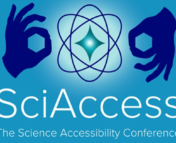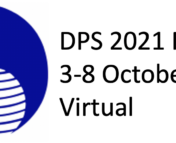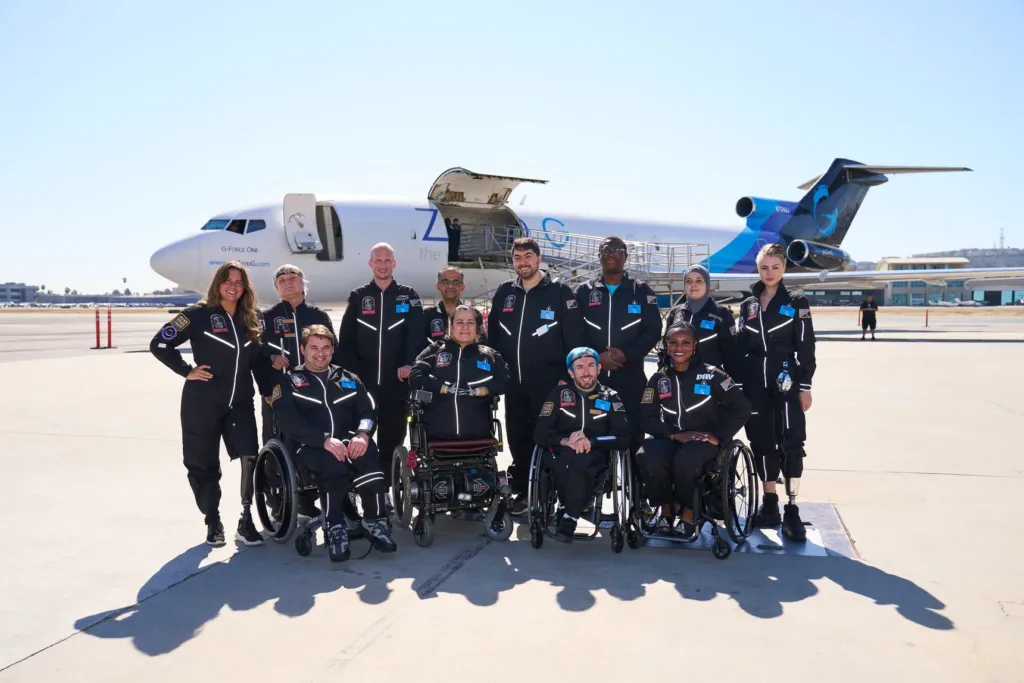
Recent civilian space flights, led by some of the world’s richest men, have featured taglines and press releases claiming that they’re making outer space more accessible and open to anyone. Although the term “accessibility” likely brings up thoughts of wheelchair ramps or service dogs, disabled people have been notably left out of these efforts to “make space accessible.”
Mission: AstroAccess, an initiative dedicated to “advancing disability inclusion in space”, is changing that. On October 17th, they made history by launching a zero gravity flight with a team of disability ambassadors, who tested design solutions to make spaceflight accessible to people with mobility, vision, and hearing disabilities.
Nearly 1 out of every 5 people in the U.S. has a disability. Current guidelines for NASA astronauts—until recently, the only American path to space travel—require near perfect health and ability, barring a large fraction of our country from the dream of reaching the cosmos from the start. However, things are finally changing in the realm of spaceflight. The European Space Agency is seeking to hire a “parastronaut” and Hayley Arceneaux recently flew with SpaceX’s Inspiration4 with the first prosthesis in space. Mission: AstroAccess is the next step in opening spaceflight, finding ways to tweak designs for accessibility and proving that disabled crewmembers can complete the necessary work in microgravity.
For this first Zero-G flight, ambassadors were competitively selected, resulting in a team of 12, representing a variety of backgrounds, careers, and abilities. There were 2 deaf, 6 blind, and 4 mobility impaired members. The team flew aboard a Zero Gravity Corporation parabolic flight, which creates sensations of hypergravity and microgravity through its flight path. Weightlessness only lasts a little over 20 seconds each time, but the passengers experienced it 15 times as the plane flew up and down repeatedly.
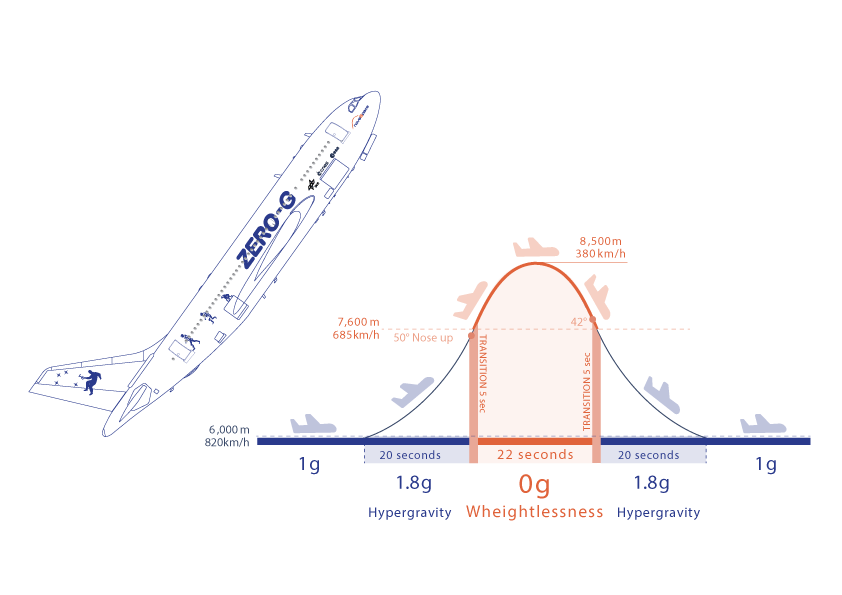
First Flight
The goal of this first flight was to test ways to make spacecraft accessible by design. At this year’s SciAccess Conference, many of the ambassadors shared their experiences and the results of their tasks and demonstrations. (Note: Ambassadors Dana Bolles, Eric Ingram, Ce-Ce Mazyck, and Mona Minkara weren’t present at this panel, but they made valuable contributions to the work described below.)
This work started even before the flight; Viktoria Modesta, ambassador and bionic performing artist, designed the team’s flight suits, tailoring them specifically to each individual’s needs so that they could function optimally in microgravity. For example, ambassador Sawyer Rosenstein, a wheelchair user and news producer, had a suit that helped keep his legs together to make movement in microgravity easier. Modesta says, “I wanted everyone to stand out and look great in images, and implement additional adaptive items like in Sawyer’s. It’s super interesting how much adaptive design and tech can really transform the experience.”
Two of the deaf ambassadors, NASA mission director Apurva Varia and chemical engineering grad student Eric Shear, described tests of communications technologies. How can someone respond to emergencies in space if they can’t hear them? In their first experiment, they tried to sign to each other in microgravity, which proved to be quite difficult while in freefall since they were more focused on using their hands to maneuver and avoid hitting anyone or anything. Next flight, they hope to try out hand or foot holds to keep stable and improve their ability to sign. They also tested a light system, where colored lights would provide visual cues for phases of the flight, replacing auditory warning signals that hearing astronauts could use. The lights were located on the floor, which proved tricky to find when in weightlessness (when the floor is no longer the floor!), so in the future they’ll test other light placements. Lastly, they tested a haptics system for alerts, which was essentially a vibrating watch. Although this worked perfectly on the ground, it floated away from their skin in microgravity, making it harder to feel. Varia describes these technologies as a great first shot, but they can definitely improve.
Blind ambassadors Zuby Onwata, Sina Bahram, and Sheri Wells-Jensen similarly tested communication for visually-impaired astronauts. Wells-Jensen, a professor of linguistics, astrobiology, and disability studies at Bowling Green State, emphasized how the flight environment is extremely loud, making auditory communication difficult. (To make Zero-G flights possible, the soundproofing of the jet must be taken off.) She tested a slate and stylus to communicate through writing, but found that difficult since your hands are then occupied and unable to help navigate weightlessness, similar to the issues with using American Sign Language. Bahram, an inclusive design consultant, tested a braille display, a device that moves pins up and down to create a changing landscape of Braille dots. This technology relies on assumptions about gravity, so to keep the pins from floating into the up position (or being smashed into the down position in hypergravity), they added an extra locking pin that worked really well. Onwata, founder of Think and Zoom Brain Control Solutions, tested his technology in microgravity, and his brain-computer interfaces showed great promise. He said, “In the future, don’t be surprised if you see astronauts using their brains to control their devices!”
Ambassadors with mobility impairments focused most of the flight on “station keeping”—staying in a given space—as well as point to point movement and getting into other body positions. This was helped by the designs of their suits, as mentioned earlier, but Rosenstein also described finding comfortable positions to float and getting into kneeling or bent positions. A loop on his pants helped him pull his legs up to his chest with his hands. He was able to get back to the landing area, where the astronauts come down as they exit microgravity, 14 out of 15 times. Mary Cooper, an aerospace student at Stanford and Brooke Owens Fellow, similarly focused on station keeping, describing how the main challenge of spaceflight is re-entry, which requires certain positioning to stay safe. She also said that having fun was a significant part of her goals, too!
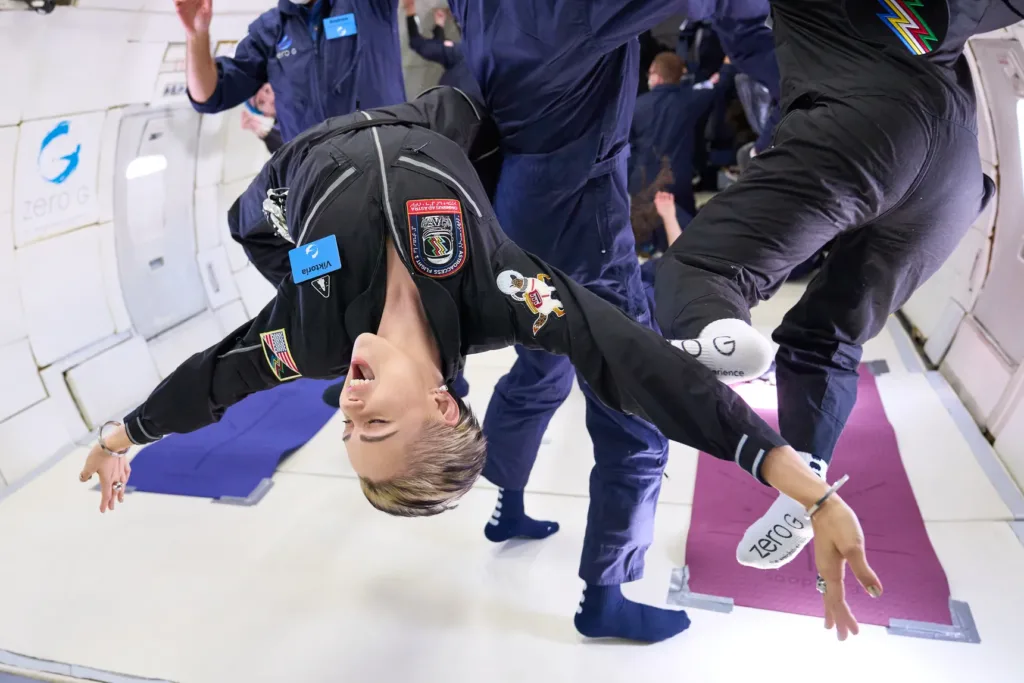
An Inspiring Experience
Every member of the team on the panel said what a truly incredible experience this was, and the images of them all floating show their joy. The flight all around was a source of inspiration for everyone involved. Modesta recalled how most of her time as a kid was spent in a hospital, saying “how things start for you does not have to be how they end up.” Varia, who wanted to be an astronaut as a kid but was discouraged from NASA’s program due to his disability, is finally reaching that dream 35 years later. The crew also shared thoughts on how revolutionary microgravity could be for bodies with disabilities. Modesta says, “It was magical to transcend physical / normal ability and find new ability. If Sawyer spent a lot of time in Zero-G, what would his new body language be? It’s interesting to explore!” SciAccess founder Anna Voelker had an interesting experience, where they had back pain during hyper gravity but it suddenly disappeared in microgravity. “Obviously pain can start suddenly,” they say. “But I didn’t know it could stop suddenly.”
The team also described how people with disabilities have natural resilience and unique assets to bring to a mission. Voelker declared there should absolutely be more neurodiversity in aerospace, and as an example of hidden strengths, noted that deaf individuals are often immune to motion sickness, like the Gallaudet 11. Bahram spoke to the constant problem solving one has to do when disabled in an inaccessible world: “In a day, most disabled folks solve more problems than non-disabled folks do in a month.”
So, what comes next for Mission: AstroAccess? Eventually, their goal is to fly suborbital and officially reach outer space, but for now they’ll likely try more Zero-G flights to continue testing and developing technology. They are excited to have this opportunity to show disabled role models, and showcase how everyone has a place in space. As Bahram says, “We need the full expression of human creativity if we’re to become an interplanetary species—we need all types of roles when thinking about space stations, habitats, how people are going to thrive in space.”
“There really is a space for everyone here,” says Cooper. “If you want to go far, you go with a team. Mission: AstroAccess is trying to go far.”
Edited by Katya Gozman
Featured image courtesy of SciAccess

